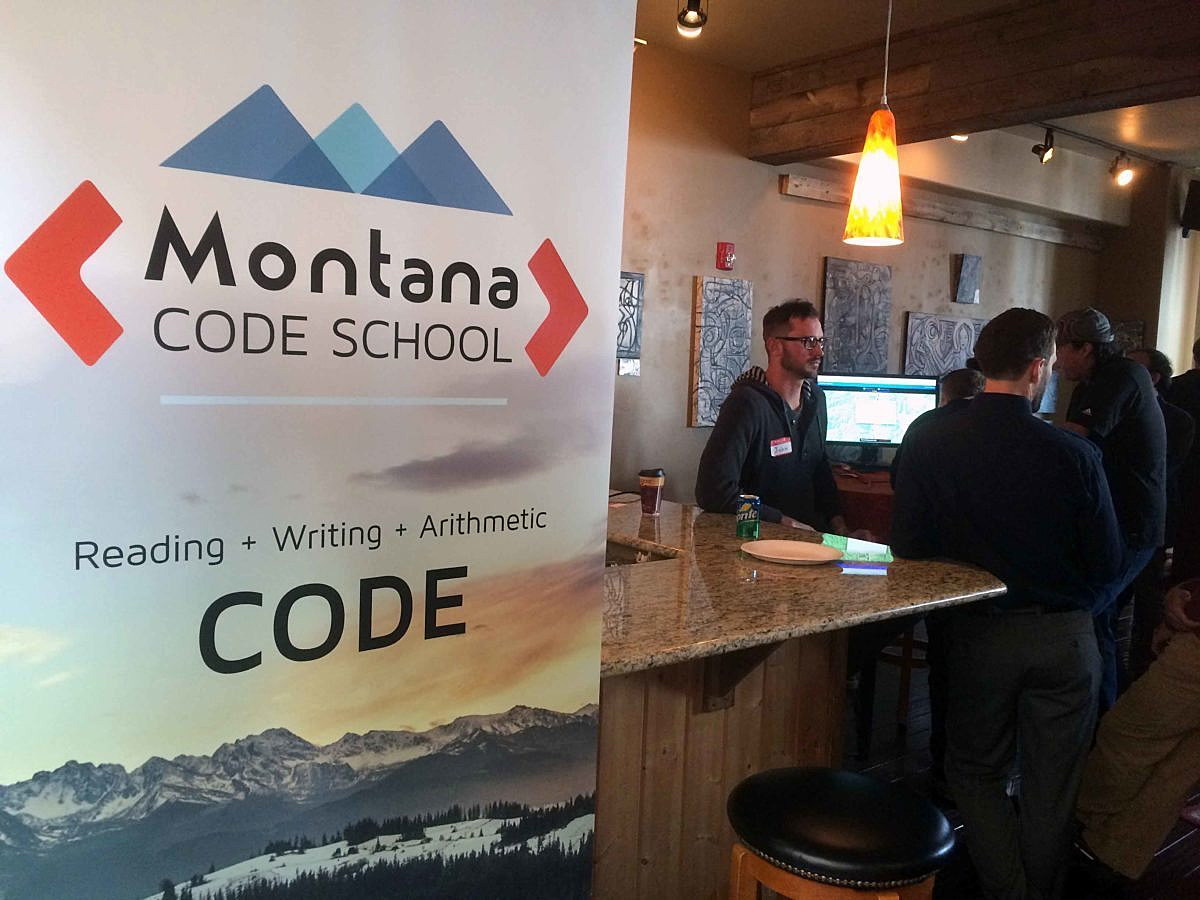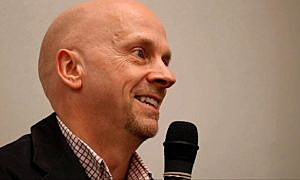

Stephanie Back used to work for the U.S. Forest Service, but after being furloughed “quite a bit,” she hopped to a job with a health insurance company, and she learned that she liked data – a lot.
This summer, Back, who has a couple of bachelor’s degrees from the University of Montana, is part of a cohort with the Montana Code School and on the path to a new career.
“We live in the age of information,” Back said. “Data is everywhere. Everyone uses it. We have to find ways to quantify it and make use of it.”
Launched in 2015, the Montana Code School is a coding bootcamp that’s part of UM and Missoula College, and it counts an estimated 150 graduates to date. In the past, it served students in Missoula and Bozeman, but this spring, the code school relaunched in an online format after going dark during the pandemic.
Paul Gladen, co-founder of the Montana Code School, said COVID-19 has taught people that going online isn’t always perfect, but it can be highly effective. In this case, it allows the code school to support its mission of workforce development for the state of Montana.
“We can really reach people across the state, so that was a really attractive model for us,” Gladen said.
Students who enroll in one of the programs – the Montana Code School offers sessions on both front end and back end development – won’t just be primed to write code, Gladen said. They’ll also be the professionals who understand how to deploy new technology in an organization.
“There is a technology industry, but technology is pervasive across industries,” he said.

At least in Missoula, ATG Cognizant is known as an employer that hires tech workers, but Gladen noted even food trucks use technology to process payments, and Back said the refrigerators people buy these days are smart and Tesla is making self-driving cars. In other words, tech professionals have options, whether it’s in health care, media, construction, financial services, academia, or another field.
A Forbes story earlier this month noted the U.S. has more than 500,000 open positions in IT, and the number of jobs is expected to double in a decade: “Competition for technical talent has been, and is, fierce.”
***
During a recent class that’s part of the back end program, instructor George Lesica spent time answering questions from students about trouble spots with Java, a programming language. He heard the things that irritate them about it (“I’m annoyed by the division in the modulus operators,” said one student) and favorite things (for one, the “command-line interface”).
The class had about 10 students, and Lesica said he believes they’re exclusively non-traditional. One student was based in Billings, but most of the rest were based in Missoula.
“Many of them already have degrees in other fields, and they’re essentially looking to enhance existing skills or completely switch course,” Lesica said.
The program runs 18 weeks, the curriculum has evolved, and Lesica said it will likely continue to change as the field continues to develop. But he said the profession is here to stay.
“I think it will change and look very different at different points in time,” Lesica said. “But I don’t see any possible way that it would cease to exist simply because we rely on computers, and computers aren’t going away. And the only way to get a computer to do anything is to write code to make it do that thing.”
Tom Gallagher, dean of Missoula College, said the demand for people with coding and programming skills is high, and the Montana Code School is addressing the need. It helps employers with a need for workers, and it helps employees get good jobs.
“These are high paying jobs in the tech industry,” Gallagher said.
The pandemic taught educators they can, in many cases, teach students remotely, and it taught employers their staff don’t have to be in the same room. Gallagher said the Montana Code School’s students can learn remotely, and eventually, they can work remotely, too.
“Name your favorite small town,” he said. “Ekalaka, Eureka, Libby. These jobs also can be remote, so not only can the training be remote, but as companies reconfigure the workforce, there’s opportunities for remote work for individuals.”
***
Back finished a biology degree in 2016 and a microbiology degree in 2017, and she said the pandemic opened her eyes to wanting something different out of life. The decision to leave the Forest Service was the hardest one she’s made because she’d spent years of her life dedicated to science, but in making the leap, she said she learned the part of science she loves most is data.
She said she appreciates in particular the fact that the instructors have computer science degrees but can deliver information in digestible ways. Now, Back is excited to use the skills she’s learning at the Montana Code School in the field, possibly bioinformatics, and eventually as a junior developer.
“My plan at the end of this course is to take all of these foundational skills that I am learning and apply them to the real world,” Back said.
The Montana Code School helps create that bridge to the real world, too; a tie between the education students receive in coding and employment opportunities, Back said. For example, as part of the program, students set up a LinkedIn profile and sign up for GitHub, a software development collaboration site.
She said this code school allows people to keep their day jobs as well, unlike some other boot camps, and one of her other goals is to buy a house in the often-out-of-reach Missoula market.
To help students who are making a transition into the tech community, Gallagher said the Montana Code School connects students changing fields with career mentors.
Adam Plon, who worked in the music industry for a decade, said he wanted to take advantage of the code school’s networking opportunity in particular, and he’s succeeded early. Plus, he gets to be creative, help solve real world problems, and gain financial freedom.
This week, just two weeks into the program, he landed a part-time job with a forest consultant firm, Holtz Forestry, based in Missoula, and if it goes well, he’ll parlay it into a full-time gig. Plon said even the part-time salary is “exciting,” well above the median wage in Missoula, and he’s excited to use coding at the company to address actual problems.
For example, he said the firm might create a wildfire simulation that helps an organization know how a fire will behave if it breaks out in a particular area: “I get to create things that have real world impacts.”
The opportunity arose because the company ended up in contact with the code school, the job appeared on one of the school’s Slack channels, and Plon, 28, jumped at the chance. He said his goal was to translate his interest in computers into a “pandemic proof” job, and the first step has happened fast.
“I’ve been on kind of Cloud Nine all week,” he said.
Gladen said the Montana Code School wants to hear from other employers that may have interest in students going through the program or fulfilling other needs. Many students are seeking to augment skills and advance in their field or shift careers entirely.
“We’re definitely seeing people that were both in the broad categories of career shifters or career progressers,” Gladen said.
Montana Code School relaunches, open to rural, remote learners



